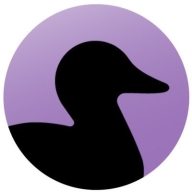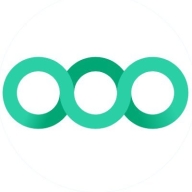

Coverity Static and Semgrep compete in the code analysis domain, each with strengths. Coverity Static is strong in comprehensive analysis and enterprise integration, while Semgrep offers flexibility and ease of use, attracting agile teams.
Features: Coverity Static provides advanced static code analysis, deep integration with complex environments, and supports a wide range of programming languages. Semgrep is highly adaptable with customizable rule sets, is open-source, and suits evolving coding practices thanks to its flexibility.
Ease of Deployment and Customer Service: Coverity Static's deployment is complex, requiring dedicated resources, but it benefits from robust support services. Semgrep is easy to implement and benefits from strong online documentation and community support, requiring less overhead.
Pricing and ROI: Coverity Static has a higher initial investment, suitable for enterprises needing extensive features and integration. Semgrep is cost-effective, with freely available versions and competitive pricing for additional features, offering quick ROI for smaller or agile projects.
| Product | Market Share (%) |
|---|---|
| Coverity Static | 6.0% |
| Semgrep | 3.0% |
| Other | 91.0% |


| Company Size | Count |
|---|---|
| Small Business | 8 |
| Midsize Enterprise | 6 |
| Large Enterprise | 31 |
Coverity gives you the speed, ease of use, accuracy, industry standards compliance, and scalability that you need to develop high-quality, secure applications. Coverity identifies critical software quality defects and security vulnerabilities in code as it’s written, early in the development process, when it’s least costly and easiest to fix. With the Code Sight integrated development environment (IDE) plugin, developers get accurate analysis in seconds in their IDE as they code. Precise actionable remediation advice and context-specific eLearning help your developers understand how to fix their prioritized issues quickly, without having to become security experts.
Coverity seamlessly integrates automated security testing into your CI/CD pipelines and supports your existing development tools and workflows. Choose where and how to do your development: on-premises or in the cloud with the Polaris Software Integrity Platform (SaaS), a highly scalable, cloud-based application security platform. Coverity supports more than 20 languages and 200 frameworks and templates.
Semgrep is an advanced static analysis tool designed to identify vulnerabilities and enforce coding standards, catering primarily to professionals with a focus on enhancing code security and quality.
Engineered for software development environments, Semgrep delivers efficient security feedback with minimal setup. By offering a rich collection of rule sets, it allows customization and integration into CI/CD pipelines, supporting continuous code examination. Semgrep not only uncovers hidden flaws but also enforces best practices, making it a valuable asset for development teams seeking to build secure and reliable software.
What are the most important features of Semgrep?In industry applications, Semgrep is a popular choice for sectors such as finance and healthcare, where code integrity and security are paramount. Its integration capabilities allow for effective oversight of compliance and secure coding standards without disrupting existing workflows. This adaptability ensures it meets sector-specific requirements, making it a trusted tool in fields where data privacy and protection are critical.
We monitor all Static Application Security Testing (SAST) reviews to prevent fraudulent reviews and keep review quality high. We do not post reviews by company employees or direct competitors. We validate each review for authenticity via cross-reference with LinkedIn, and personal follow-up with the reviewer when necessary.